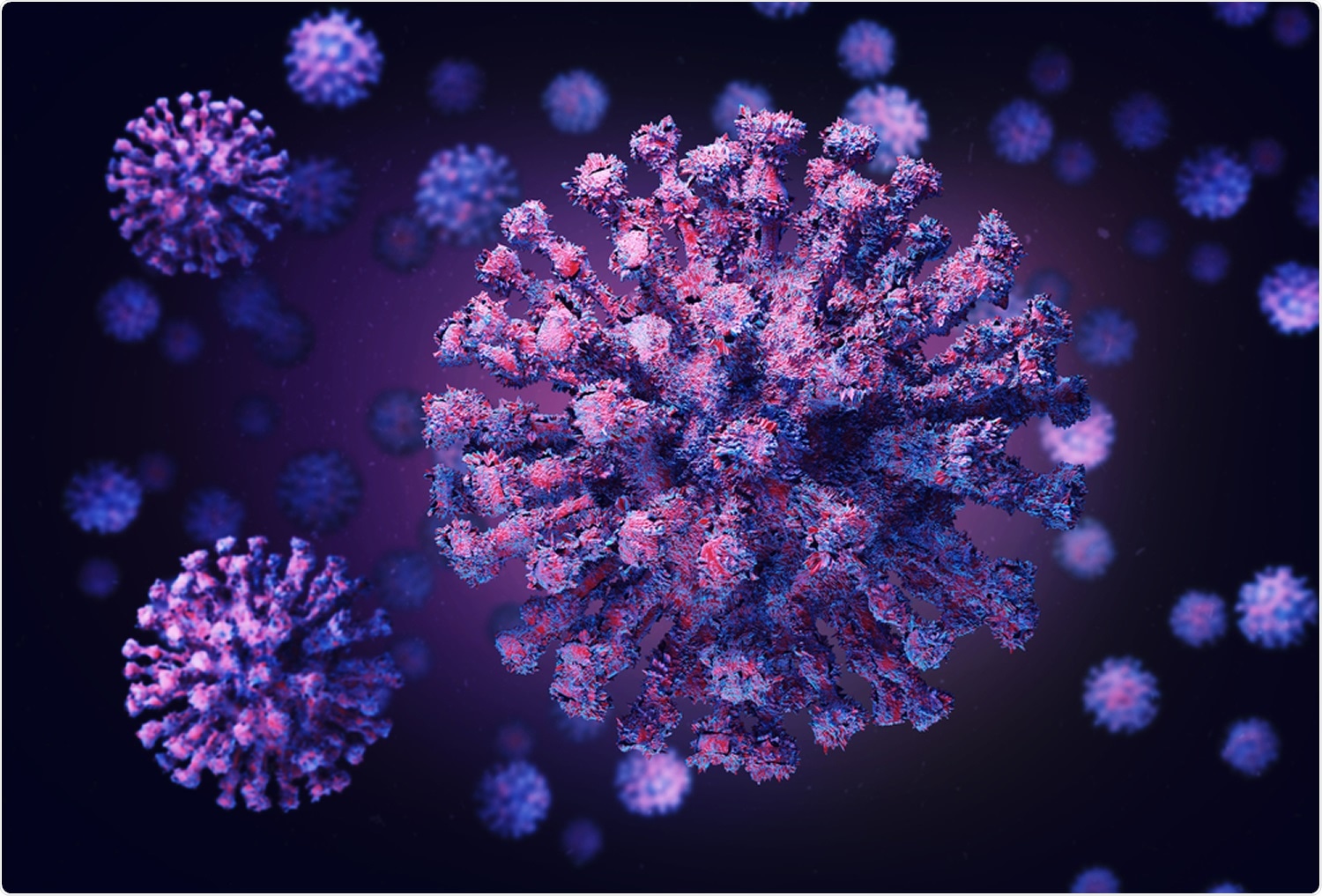Scientist explore conserved RNA elements as potential targets for anti-SARS-CoV-2 drugs

As the severe acute respiratory syndrome coronavirus 2 (SARS-CoV-2), the pathogen behind the coronavirus disease (COVID-19) pandemic, continues to spread, developing effective drugs to combat the viral spread is crucial.
Researchers at Goethe University and their collaborators in the international COVID-19-NMR consortium have found that certain regions in the SARS-CoV-2 genome might be an appropriate target for future drugs.
The study, published in the journal Angewandte Chemie International Edition, identified many small molecules that bind to certain parts of the SARS-CoV-2 genome that are less likely altered by mutations using dedicated substance libraries. The scientists derived key functional units and groups in ligands for effective and safe targeting of SARS-CoV-2 RNA.

SARS-CoV-2 and cell infection
The SARS-CoV-2 infects human cells through its S spike protein’s receptor-binding domain (RBD). It binds with the human angiotensin-converting enzyme 2 (ACE2), the viral cellular gateway. Upon infection, the virus introduces the RNA into the cell and reprograms it to produce viral proteins and whole viral particles.
SARS-CoV-2 contains a positive single-stranded RNA genome of about 30,000 nucleotides. In the genome, 15 RNA elements were shown as conserved between SARS-CoV and SARS-CoV-2. Previously, scientists determined that these elements fold independently via nuclear magnetic resonance (NMR) spectroscopy.
Past studies aim to target and block viral proteins. By attacking the viral genome, a long RNA molecule, it may show promise in slowing down or stopping viral replication.
Antiviral treatment for SARS-CoV-2
Since the emergence of the COVID-19 pandemic, scientists have focused on developing an antiviral treatment for SARS-CoV-2. The vaccination development and efforts demonstrated impressive advancements, but finding an effective antiviral may help curb the pandemic.
Further, experimental approaches are being performed in drug repurposing and the design of novel drugs against COVID-19. Most of these drug studies focus on targeting proteins to mitigate viral replication, while some have directly targeted the large viral RNA genome.
Since there are many viral RNA in infected cells, it could open the door for pharmaceutical intervention. However, only a few experimental screenings for ligands directly target the structured RNA elements in SARS-CoV-2.
The study
The researchers reported a holistic NMR-based screening campaign investigating previously detected structured RNA elements in the current study. From there, the team determined the druggability of these regulatory RNA elements by NMR-based screening, utilizing a workflow used in the past.
The researchers also used a well-characterized and highly diverse fragment library. They used a library of 768 small molecules to interact with the 15 RNA segments in the study. After using the NMR spectroscopy, they came up with 69 small molecules bound to 13 of the 15 RNA segments. Three of these molecules bind specifically to just one RNA segment.
The study has shown that the SARS-CoV-2 RNA is highly suitable as a potential drug target. The team plans to extend ongoing studies that target viral proteome.
The team established the conserved RNA elements as a potential space for small molecule targeting towards coronavirus-specific treatment to arrive at the study findings, even beyond SARS-CoV-2. The team studied the RNA target space towards sequence-derived properties and derived unique target sites within the SARS-CoV-2 genome that are conserved among coronaviruses.
“Exceptionally rare mutations in SARS-CoV-2 during 2020 have maintained the target space for ligands up to now. By analysis of the experimental hits, we can derive privileged RNA target space from a medicinal chemistry perspective,” the team explained in the study.
Lead researchers Professor Harald Schwalbe said, “Three of the molecules even bind specifically to just one RNA segment. Through this, we were able to show that the SARS-CoV-2 RNA is highly suitable as a potential target structure for drugs. Furthermore, given the large number of SARS-CoV-2 mutations, such conservative RNA segments, like those we’ve identified, are particularly interesting for developing potential inhibitors. And since the viral RNA accounts for up to two-thirds of all RNA in an infected cell, we should be able to disrupt viral replication on a considerable scale by using suitable molecules.”
The researchers have now already started follow-up trials with readily available substances that are chemically similar to the binding partners from the substance library.
COVID-19 situation
Scientists race to find treatment options for COVID-19 cases. The total number of cases worldwide has reached over 191 million cases, with over 4.12 million deaths. The United States reports the highest case toll, topping 34.2 million cases, followed by India, Brazil, and Russia, with over 31.2 million, 19.4 million, and 5.9 million cases, respectively.
In terms of vaccination efforts, more than 3.71 billion doses have been administered across the globe. As the virus continues to wreak havoc, efforts have been focused on vaccination campaigns and finding an effective anti-SARS-CoV-2 drug.
- Sreeramuli, S., Richter, C., Berg, H., et al. (2021). Exploring the druggability of conserved RNA regulatory elements in the SARS-CoV-2 genome. Angewandte Chemie International Edition. https://onlinelibrary.wiley.com/doi/10.1002/anie.202103693
- COVID-19 Dashboard by the Center for Systems Science and Engineering (CSSE) at Johns Hopkins University (JHU) – https://gisanddata.maps.arcgis.com/apps/dashboards/bda7594740fd40299423467b48e9ecf6
Posted in: Medical Research News | Disease/Infection News
Tags: ACE2, Angiotensin, Angiotensin-Converting Enzyme 2, Cell, Coronavirus, Coronavirus Disease COVID-19, Drug Repurposing, Drugs, Enzyme, Genome, Medicinal Chemistry, Molecule, Nucleotides, Pandemic, Pathogen, Protein, Proteome, Receptor, Regulatory RNA, Respiratory, RNA, SARS, SARS-CoV-2, Severe Acute Respiratory, Severe Acute Respiratory Syndrome, Spectroscopy, Spike Protein, Syndrome, Virus

Written by
Angela Betsaida B. Laguipo
Angela is a nurse by profession and a writer by heart. She graduated with honors (Cum Laude) for her Bachelor of Nursing degree at the University of Baguio, Philippines. She is currently completing her Master's Degree where she specialized in Maternal and Child Nursing and worked as a clinical instructor and educator in the School of Nursing at the University of Baguio.
Source: Read Full Article